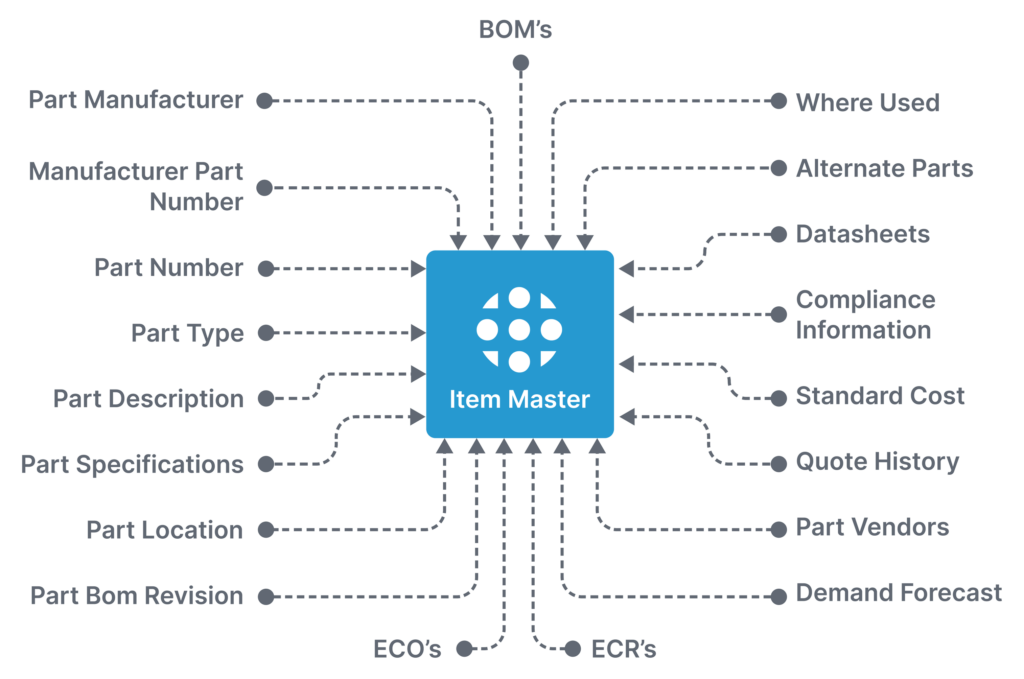Product Lifecycle Management (PLM) systems, like Aligni PLM are designed to help manage the data and decisions made throughout the product development process and help facilitate the product’s transition to manufacturing. Teams that employ these systems look to them as their single source of truth. The PLM system becomes the source of the most up-to-date information and the rich history of decision making that can be searched and analyzed.
For companies getting the most out of their PLM, the data managed goes beyond exhaustive product data and into adjacent areas that support its eventual manufacture. This data is often provided by users outside of the product engineering department. These contributors sometimes include purchasing, quality, and manufacturing departments. Each department adds their information to a centralized PLM database, instead of keeping important information siloed, thereby adding value to the PLM system as a whole.

Once all of this information is collected within the PLM system’s item master database, the job of keeping the information updated and accessible to all who require it becomes a lot easier. No more struggling with several independent spreadsheets and double checking how current the data within it is. That means that each department works more on collaboration than on compartmentalized data.
We’ve put together a deeper dive into the sorts of data a PLM system maintains for a typical company. The list is broken out by which department typically provides what information to the system.
Product Engineering Department:
- CAD Models and Drawings: The engineering department contributes CAD models, assemblies and subassemblies, 2D drawings, and associated files that represent the design and technical specifications of the product.
- Bill of Materials (BOM): Engineers provide detailed BOMs that list all of the components, sub-assemblies, and raw materials required to build the product. This includes part numbers, descriptions, quantities, and any associated specifications or parameters.
- Product Specifications: The engineering department adds product specifications, including functional requirements, performance criteria, design guidelines, and other technical details that define the characteristics and behavior of the product.
- Design Changes and Revisions: Engineers contribute information about design changes, updates, and revisions made during the product development process. This includes documenting the reason for the change, the affected components, and the updated specifications or drawings.
Purchasing Department:
- Supplier Information: The purchasing department contributes data related to approved suppliers/vendors. This includes details such as supplier names, contact information, parts and materials approved to purchase, pricing agreements, lead times, and preferred supplier rankings.
- Supplier Contracts and Agreements: They provide contract and agreement documentation related to procurement activities, such as supply contracts, service level agreements (SLAs), and non-disclosure agreements (NDAs).
Quality Assurance Department
- Testing and reporting: This department provides data related to quality inspections, test results, non-conformance reports (NCRs), and potentially any engineering change management functions related to specified components..
- Other quality assurance information: This can be generated during the manufacturing process including testing process instructions or information collected through in-field testing and warranty reporting.
The lists above only provide a general accounting of the data found in a PLM system. Many firms store even greater data within these systems in accordance with their particular product and process needs with custom fields. The more data stored within the system about the product, the better understanding of the product and better decision making, and management can be had.
If it’s time to start managing product information more effectively, then it’s time to migrate to a database-driven PLM management system. Sign up online for Aligni PLM today.
Start your 30-day free trial
Helping You Make Great Things…Better.
